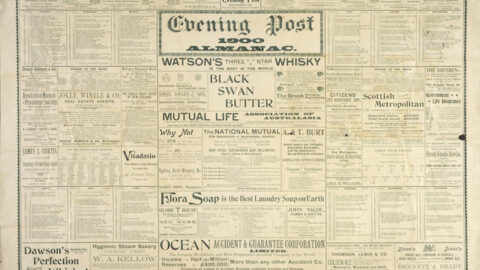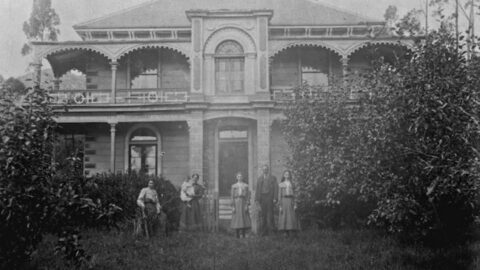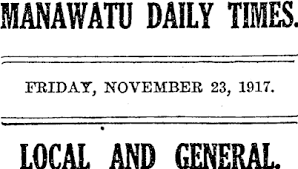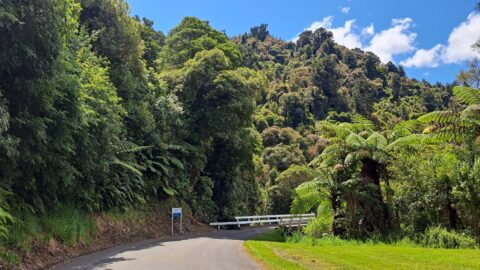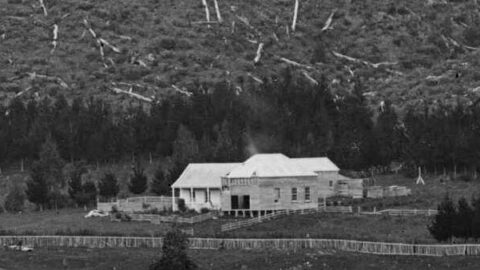The Wainui-o-mata Watershed
The following memorandum by Mr. H. Jackson, late Chief Surveyor of the Wellington Province, has been handed to us for publication and will doubtless be read with interest:
The headwaters of the Wainuiomata, from which the new water supply for the city of Wellington is to be drawn, take their rise in a basin of the Rimutaka Hills, formed by the main range at its extremity, and by the ridge of spurs from the main range on its flanks, which latter gradually converge and eventually, nearly meeting, bound the narrow valley of the Wainuiomata. At or about the embouchure of this basin, a site has been selected for the reservoir of the water supply. The whole area of the watershed is waste land belonging to the Crown, with the exception of some 3,000 acres which have been purchased by the Messrs Sinclair, of Wainuiomata, and which is so located as to front and flank immediately upon the site of the reservoir.
This vast basin is at present in a state of nature; it is heavily clothed with timber and interspersed with numerous gullies affording limpid waters from their streams and rivulets. It is thus evident that the whole of the streams upon which the water supply for the city of Wellington depends must pass through the said property of the Messrs Sinclair before their waters can reach the reservoir. The question hence arises whether the effects of felling and clearing the standing bush on the 3,000 acres owned by the Messrs Sinclair – a work which is in immediate contemplation – will be of so serious a nature as to materially vitiate, either by direct or indirect causes, the quality and quantity of the waters for the supply of the city of Wellington.
It is necessary here to premise that the quality and quantity of the waters supplied by mountain streams depend exclusively on the amount of bush, ferns, mosses, and other natural growths on the lands through which they pass. For, denuded of these catch-waters afforded by nature, the ground would be rendered powerless to absorb and retain the periodical rains, and so at certain seasons of the year, the volume of water in the streams would be liable at least to diminution, and possibly even to exhaustion, whilst the action of the sun and air upon streams exposed to their direct influence would essentially injure the pristine quality of the water.
The above premises directly imply the results that may be expected, more or less, as the consequence of clearing so extensive an area as 3,000 acres through which the streams flow immediately into the reservoir. The volume of water in this case, it must be admitted, would not become materially diminished, as the area of the contemplated clearings is small in comparison with that of the entire watershed; but the quality would be liable to serious deterioration, not only from the constant putrification of the masses of vegetable and animal matter which inevitably attend the occupation and cultivation of land. All these impurities must of necessity drain to the only outlet – the reservoir.
No further proof of the correctness of these remarks need be sought for than a consideration of the deteriorated condition of the present water supply of Wellington from the Karori stream, which results from the causes just stated, and which a filtering process fails to restore to wholesomeness. If, however, the danger to be apprehended of a diminished water supply arising from the clearing of the bush on this patch of 3,000 acres be not serious, there is yet the extremely probable contingency of such a course leading to the wholesale destruction of the bush by fire throughout the area of the watershed, for during the process of clearing it would be impossible to confine the bush fires within the boundaries of the purchased lands. Indeed, it is well known that fires lighted in bushed gullies invariably run to the crests of the hills.
An instance is afforded in the manner in which the bush became accidentally destroyed on the Rimutaka some few years back, the fire then running from foot to summit throughout the whole length of the road from Featherston to the Saddle. And as the destruction of the bush – which may be regarded as a mere question of time if lands within the watershed become occupied – involves more or less the loss of water supply, apprehensions may reasonably be entertained that during seasons of drought the supply would be deficient of the demand for Wellington, even to the degree of exhaustion.
It becomes, therefore, a matter of importance and careful consideration whether the risk of the destruction of the bush throughout the expanse of the watershed, and consequently the loss to the ground of the properties of absorbing a sufficient quantity of moisture to feed the streams filling the reservoir, can safely be incurred, or whether by timely intervention, apprehensions of such a danger should be averted.
In its present state, no other locality can be selected in the vicinity of Wellington affording a greater or purer supply of water than that of the Wainuiomata. Nature appears to have endowed it with the requisites for perpetuating this supply to all time; but to secure this, Nature also demands that her works shall not be interfered with. An enormous expenditure of money will have been incurred on the completion of the new waterworks, which are undertaken on a well-grounded assumption that the supply of water is to be never-ceasing.
I am therefore convinced that the danger of destruction to the bush of the watershed should not be incurred, and that steps ought to be taken in the public interest to avert it, by the Corporation of Wellington endeavoring to acquire from the Messrs Sinclair the fee-simple of their 3,000 acres.
Henry Jackson. The Hutt, 21st February 1882.
Tags: Newspaper Sinclair Waterworks
